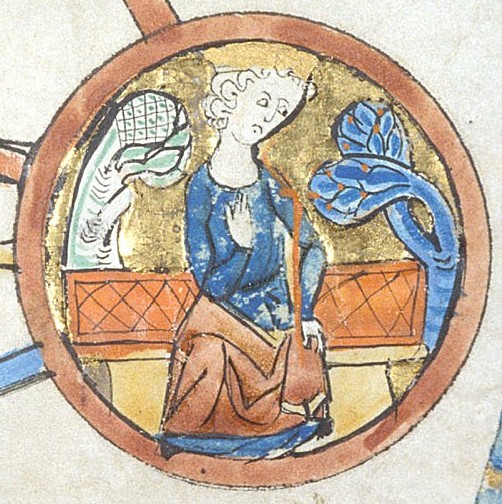|
Bernard (bishop Of St Davids)
Bernard was the first Norman bishop of St David's (1115–1148). Originally an erudite layman serving as chancellor to Queen Matilda, he was abruptly appointed the bishop of St. David's on 18 September 1115, when King Henry I (Matilda's husband) summoned the chapter of St. David's to London, and persuaded them to choose Bernard as next bishop (the previous bishop having died that year).''Dictionary of Welsh Biography'', John Edward Lloyd, London, 1959, entry for ''Bernard (died 1148), bishop of S. Davids'' Immediately, Bernard was sent to the Church of St. Mary Overie and made a priest, that same day; the following day he was made a bishop, in Westminster Abbey. At that time, the lands of the bishop were a quasi-sovereign territory, a status confirmed that year by Henry I when Bernard, after acknowledging Henry as suzerain of the bishop's realm, was given a charter by the king which designated the lands – Dewisland – as a Marcher Lordship.Judgement in ''Crown Estate Comm ... [...More Info...] [...Related Items...] OR: [Wikipedia] [Google] [Baidu] |
Bishop Of St David's
The Bishop of St Davids is the Ordinary (officer), ordinary of the Church in Wales Diocese of St Davids. The succession of bishops stretches back to Saint David who in the 6th century established his seat in what is today the St Davids, city of St Davids in Pembrokeshire, founding St David's Cathedral, St Davids Cathedral. The current bishop of St Davids is Joanna Penberthy, since the Confirmation of bishops, confirmation on 30 November 2016 of her Canonical election, election.Church in Wales — Election of Wales’ first woman bishop is confirmed (Accessed 5 January 2017) History The history of the diocese of St Davids is traditionally traced to that saint in the latter half of the 6th century. Records of t ...[...More Info...] [...Related Items...] OR: [Wikipedia] [Google] [Baidu] |
Matilda Of Scotland
Matilda of Scotland (originally christened Edith, 1080 – 1 May 1118), also known as Good Queen Maud, or Matilda of Blessed Memory, was Queen of England and Duchess of Normandy as the first wife of King Henry I. She acted as regent of England on several occasions during Henry's absences: in 1104, 1107, 1108, and 1111. Daughter of King Malcolm III of Scotland and the Anglo-Saxon princess Margaret of Wessex, Matilda was educated at a convent in southern England, where her aunt Christina was abbess, and forced her to wear a veil. In 1093, Matilda was engaged to an English nobleman until her father and her brother Edward were killed in the Battle of Alnwick in 1093. Her uncle Donald III seized the throne of Scotland, triggering a messy succession conflict. England opposed King Donald and supported first her half-brother Duncan II as king of Scotland, and after his death, her brother Edgar, who assumed the throne in 1097. Henry I succeeded his brother William Rufus as king of ... [...More Info...] [...Related Items...] OR: [Wikipedia] [Google] [Baidu] |
Henry I Of England
Henry I (c. 1068 – 1 December 1135), also known as Henry Beauclerc, was King of England from 1100 to his death in 1135. He was the fourth son of William the Conqueror and was educated in Latin and the liberal arts. On William's death in 1087, Henry's elder brothers Robert Curthose and William Rufus inherited Normandy and England, respectively, but Henry was left landless. He purchased the County of Cotentin in western Normandy from Robert, but his brothers deposed him in 1091. He gradually rebuilt his power base in the Cotentin and allied himself with William Rufus against Robert. Present at the place where his brother William died in a hunting accident in 1100, Henry seized the English throne, promising at his coronation to correct many of William's less popular policies. He married Matilda of Scotland and they had two surviving children, Empress Matilda and William Adelin; he also had many illegitimate children by his many mistresses. Robert, who invaded from Nor ... [...More Info...] [...Related Items...] OR: [Wikipedia] [Google] [Baidu] |

